This post contains affiliate links from which I may receive a small commission, at no extra cost to you. In no way does this affect my opinion or the information I provide on the product. Please read my disclaimer for more info.
Written by Lucie Villeneuve, nutritionist, M.Sc.
Healthy eating on a budget is a challenge for a lot of people. While a lot of you are trying to eat healthier and to make better food choices, it can be very difficult when your budget just won’t allow it.
Sure, healthy eating can definitely be expensive, but there are a bunch of ways to make it more affordable. Here are my best tips for how to eat healthy on a budget.
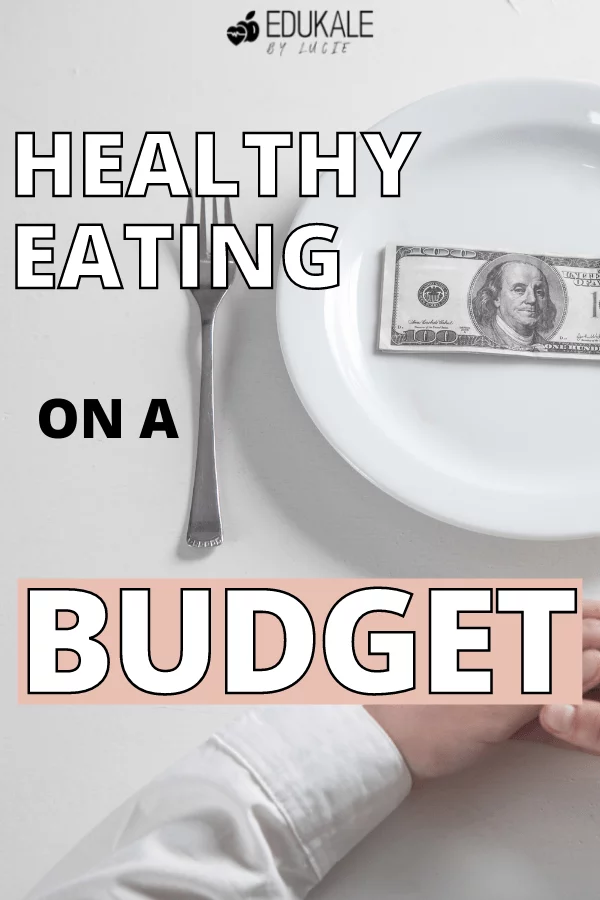
Plan your meals
Take some time during the week to sit down and plan out all of the meals you want to eat throughout the week, write the ingredients you need, and make a grocery list. This way, you can stick to buying what you actually need and not waste money buying things you think you might need or things you don’t need at all.
Make sure to eat a full meal before grocery shopping as well— this will prevent you from getting all those expensive snacks you neither want nor need.
Buy in bulk when possible
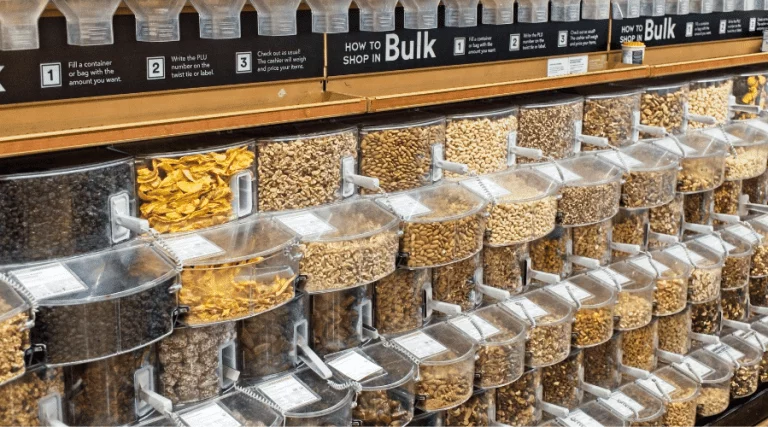
Buying products without their packaging can save money that definitely adds up. Foods like rice, pasta, quinoa, beans, oats, nuts and seeds…can often be bought in bulk.
Don’t hesitate to check the price per pound of the product and compare it to buying the same product in a package You can bring your own jars or fill up paper bags. It’s better for the planet, too!
Buy frozen, canned, and jarred fruit and veggies
Fresh fruit and veggies can be expensive, take a long time to cut, and may go bad pretty quickly…So don’t hesitate to get the frozen option!
There’s a common misconception that fresh is always better when it comes to vegetables, but that is not true at all. In fact, many frozen fruit or veggies can even have more nutrients than fresh ones because they were frozen at peak maturity [1]. Canned and jarred veggies can also be absolutely fine as long as they aren’t filled with sodium, for instance, which you can check the label for.
Stock up on the basics
You can eat healthily for pretty cheap if you stick to foods like whole-wheat pasta, brown rice, oats, whole wheat bread, beans, chickpeas, lentils, and cheap fruit and veggies like apples, bananas, oranges, pears, cucumbers, zucchini, carrots, broccoli, onions, potatoes…
Take some time to research the cheapest options at your local grocery store. This will also vary depending on the time of year, so make sure to eat what’s in season.
Skip the trendy foods
Along those lines, there are lots of trendy health foods that are indeed very healthy, but not necessarily healthier than their cheaper alternatives.
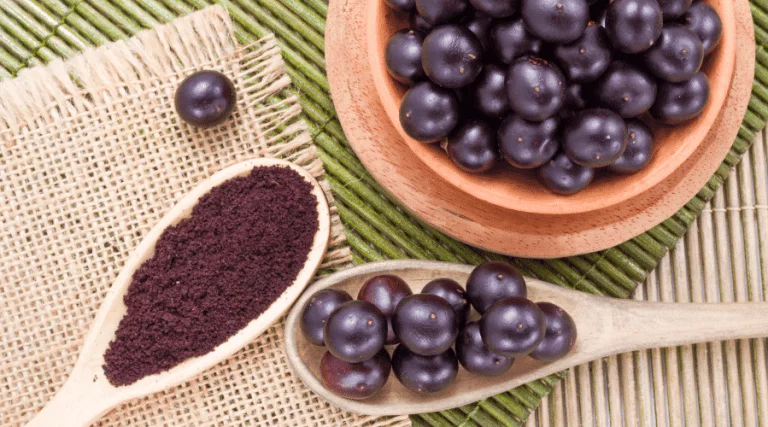
For example, potatoes are a great alternative to more expensive sweet potatoes, frozen berries are as nutritious as acai or Gogi berries, peanut butter is a cheaper (yet more nutritious) nut butter than cashew or almond butter, plant-based protein can be beans, lentils, or tofu instead of expensive mock meats, oat or soy milk is even better than almond milk and much cheaper…
You get the idea, there’s great nutrition in simpler, cheaper foods too! This also goes for expensive supplements which aren’t necessary in most cases [2].
Spice things up
So now that you’re buying all of these more basic staple foods, you may worry that things will become a little bland. This is where seasoning comes in. The one thing I encourage you to invest in is a herb and spice rack where you keep a bunch of dried herbs and spices. This will help elevate even the simplest dish and can offer multiple different recipes for one basic ingredient.
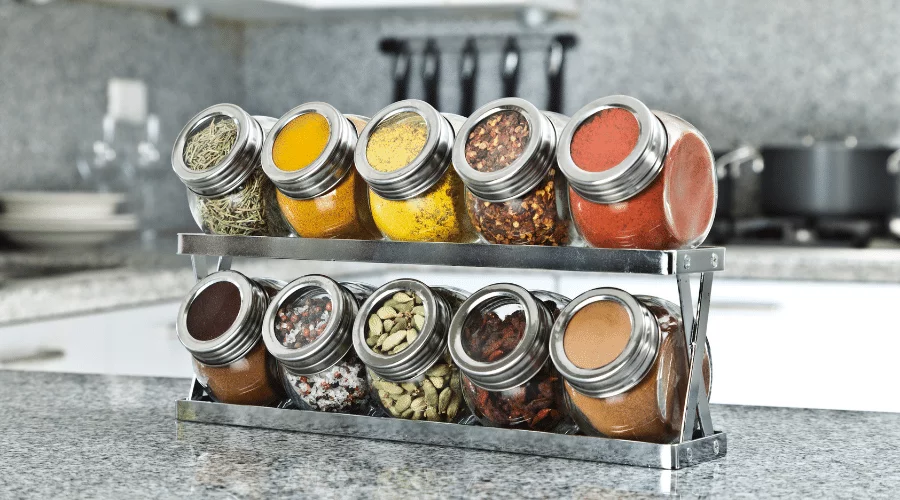
For instance, add curry to rice and veggies for a delicious vegetable curry, or replace that with paprika and chili powder for a spicier alternative, or just add some garlic powder and dried cilantro for a simpler yet tasty version. You can even add vanilla sugar and cinnamon to rice to make it a dessert!
Herbs and spices also boost the nutrient content of your meal, so don’t hesitate to experiment with them all you want.
Buy the generic or store brand
The more expensive brand is not always better! You can always check the label if you want to make sure but a lot of times you’re definitely paying for the brand’s reputation. Don’t hesitate to choose the store brand version instead of the more expensive well-known brand, unless, of course, the difference is worth it to you.
Make your own version when you can
There are a bunch of food items that are convenient to buy premade but that you can make on your own for cheaper (and certainly healthier as well.)
Trail mixes, granola bars, guacamole, hummus, salads, sandwiches, pancakes, pizza, smoothies, soups, sauces…all can be made on your own. Also, make sure that you’re baking your cakes and other baked goods from scratch and not from mixes!
Limit takeout food/ eating out
I think this is a well-known fact, but eating out or ordering in is much more expensive, and often times less healthy, than making your own home-cooked meal. Try to view it as a treat, something you do once in a while for a special occasion instead of something you do mindlessly out of convenience.
This tip also goes for coffee — it’s so much cheaper to make it at home rather than paying a ridiculously high amount for it every day!
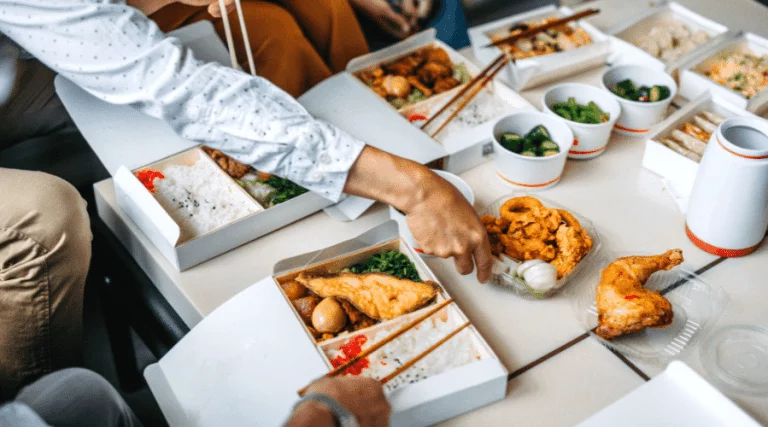
Take advantage of what’s on sale
Plan your meals around items on sale, or foods you have coupons for. Don’t buy random items just because they’re on sale.
Make sure to check out the markdown shelf where you can find products that are going to go bad soon at a cheaper price.
If non-perishable items are on sale (like oils, canned or jarred foods…) and you have the storage space for them, definitely stock up on them!
If fresh produce is on sale, you can buy it in bigger quantities and then peel, cut, and freeze the excess to make sure it doesn’t go to waste before you have a chance to eat it.
The key here is really planning your meals around what’s on sale instead of randomly buying whatever is on sale. You also don’t want to buy huge quantities you won’t eat, which will lead to wasting food, which obviously isn’t a great way to save money.
Limit food waste
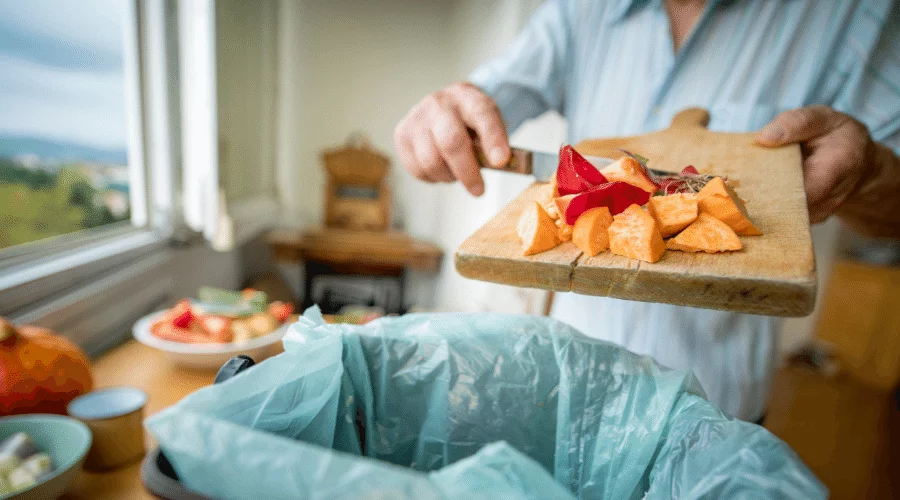
When you feel like you won’t have time to eat certain foods before they go bad, you can freeze them.
Furthermore, don’t throw your food away as soon as the expiration date passes— the actual date until you can consume the food is often way past that. Obviously, I wouldn’t suggest eating foods that have gone bad 6 months ago, but you can use your senses (specifically your smell) to determine whether you can still eat the food a few days/weeks later.
Make sure to inspect your pantry and fridge regularly to check that nothing is going bad, and finish the foods you do have before buying more.
Finally, while you should never force yourself to finish your plate, you don’t have to throw your leftovers away. Try storing the extra food in a container and putting it in your fridge/freezer for later.
How to eat healthy on a budget in short
Eating healthy, balanced meals doesn’t have to be expensive. Planning your meals, sticking to more basic and cheaper food items, making your own alternatives, and limiting food waste can really help lower your grocery bill.
These little tips are pretty easy to put in place and can definitely add up!
-Lucie
If you’re interested in nutrition, its impact on our health, and the science behind it, you should definitely read How Not to Die. In this book, Doctor Michael Greger, founder of Nutrition Facts, examines the top causes of death in America and explains how your diet can prevent— and in some cases even reverse— them. His advice is all backed by science and he writes in a very clear and entertaining way. This book isn’t a list of what you already know. It will teach you the keys to living a long healthy life, in a simple and practical way, and without spending fortunes on supplements and pills!

